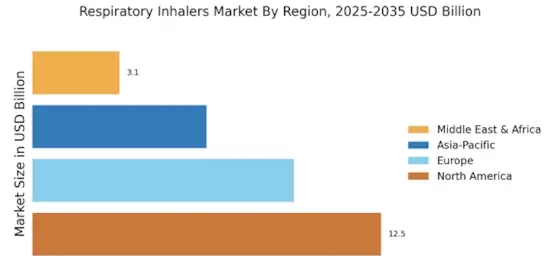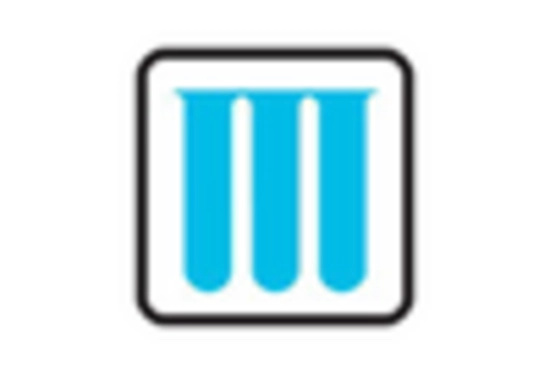Growing Demand for Personalized Medicine
The trend towards personalized medicine is emerging as a key driver in the Respiratory Inhalers Market. Patients are increasingly seeking tailored treatment options that consider their unique health profiles and preferences. This demand is prompting manufacturers to develop inhalers that can be customized based on individual patient needs, such as dosage adjustments and delivery mechanisms. Additionally, advancements in pharmacogenomics are enabling healthcare providers to prescribe inhalers that are more effective for specific patient populations. As personalized medicine continues to gain traction, the Respiratory Inhalers Market is expected to evolve, with a greater emphasis on individualized treatment approaches that enhance patient satisfaction and outcomes.
Increased Focus on Preventive Healthcare
The shift towards preventive healthcare is driving growth in the Respiratory Inhalers Market. Governments and health organizations are increasingly promoting awareness campaigns aimed at educating the public about respiratory health and the importance of early intervention. This focus on prevention encourages individuals to seek medical advice sooner, leading to earlier diagnoses and increased prescriptions for inhalers. Furthermore, the integration of inhalers into comprehensive asthma management plans is becoming more common, as healthcare providers recognize the need for proactive treatment strategies. This trend is expected to bolster the Respiratory Inhalers Market, as more patients are equipped with the necessary tools to manage their conditions effectively.
Regulatory Support for Advanced Therapies
Regulatory bodies are playing a crucial role in fostering innovation within the Respiratory Inhalers Market. Initiatives aimed at expediting the approval process for new inhalation therapies are encouraging pharmaceutical companies to invest in research and development. For instance, the introduction of fast-track designations for novel inhalers can significantly reduce the time it takes for new products to reach the market. This regulatory support not only stimulates competition but also enhances the availability of advanced therapies for patients. As a result, the Respiratory Inhalers Market is likely to experience an influx of innovative products that cater to diverse patient needs, ultimately improving treatment options.
Rising Prevalence of Respiratory Diseases
The increasing incidence of respiratory diseases, such as asthma and chronic obstructive pulmonary disease (COPD), is a primary driver of the Respiratory Inhalers Market. According to recent data, approximately 300 million people worldwide suffer from asthma, while COPD affects around 251 million individuals. This growing patient population necessitates the development and distribution of effective inhalation therapies. As awareness of respiratory conditions rises, healthcare providers are more likely to prescribe inhalers, thereby expanding the market. Furthermore, the aging population, which is more susceptible to respiratory ailments, contributes to the demand for inhalers. The Respiratory Inhalers Market is thus poised for growth as healthcare systems adapt to meet the needs of these patients.
Technological Innovations in Inhaler Design
Technological advancements in inhaler design are significantly influencing the Respiratory Inhalers Market. Innovations such as smart inhalers, which incorporate digital health technologies, are enhancing patient adherence and monitoring. These devices can track usage patterns and provide feedback to patients and healthcare providers, potentially improving treatment outcomes. The market for smart inhalers is projected to grow substantially, with estimates suggesting a compound annual growth rate (CAGR) of over 20% in the coming years. Additionally, the development of breath-actuated inhalers and nebulizers is making inhalation therapies more user-friendly, particularly for children and the elderly. As these technologies continue to evolve, they are likely to reshape the landscape of the Respiratory Inhalers Market.


















Leave a Comment